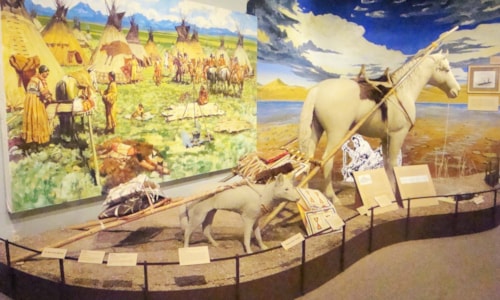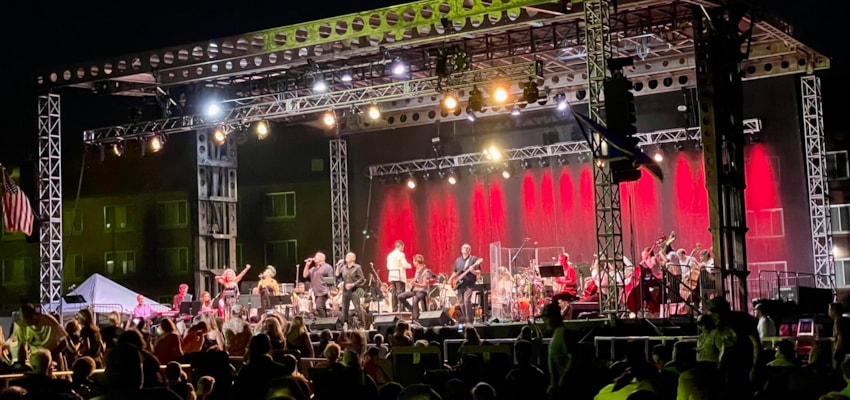11 Things to Know About Southwest Montana History

1. Mining is kind of a Big Deal: The first large amounts of U.S. citizens came to Southwest Montana because of mining. From placer mining to the open pit mining of the Berkley pit, the history of Southwest Montana after 1863 is the history of mining and mining innovation. The Alder Gulch diggings were the richest placer gold fields ever discovered, and in its heyday, Butte was one of the world’s largest producers of copper and silver.
2. There is a long Native American history: The lack of a reservation means that it can be easy to forget about the Native American history in Southwest Montana, but it shouldn’t be overlooked. Bands of Shoshone travelled extensively in the area, and Bannack was named for the Bannock Indians encountered by the first prospectors. As early as 700 A.D., Natives considered the Gates of the Mountains area sacred, and local tradition holds that by common consent no warfare was allowed in the Boulder Valley. The Big Hole Battlefield near Wisdom is on the Nez Perce Trail, which commemorates Chief Joseph’s historic flight from the U.S. Army.

3. Lewis and Clark are a Super Big Deal: I don’t know if you know this about the Northwest, and about Montana in particular, but we are obsessed with Lewis and Clark. Seriously, it is almost all we talk about. In fairness, L&C did spend nearly a quarter of their trip in Montana, and followed the Jefferson and Beaverhead Rivers across Southwest Montana. Beaverhead Rock marks the meeting of the Expedition and the Shoshone tribe that led them across the mountains safely.
4. SWMT history is more than just vigilantes (but vigilantes are also a Big Deal): Seriously, the Vigilantes were only active for a few months in 1863-64, and yet no Montana history is complete without them. Why? Well, it is a pretty fascinating story, and it probably helped that many Vigilantes went on to
become some the most important public figures in early Montana.
5. It has always been the capital of Montana: Bannack was the first territorial capital, then Virginia City, then Helena, and when it came time to pick a state capital, the race was between Anaconda and Helena (spoiler, Helena won). I don’t know what conclusions you can draw from that, but there you are.

6. Butte: Sure, it’s underwhelming from I-90, but nothing beats Butte history. Butte was one of the largest producers of silver and copper and earned the title “Richest Hill on Earth.” Butte was one of the first cities in the world with electricity, and had as much ethnic diversity as New York, Chicago, or San Francisco. It is a fascinating town with a rich history and a promising future.
7. Loads and loads of Irish: During Butte’s heyday, the Irish made up a quarter of the town’s population, the highest concentration of Irish in any city in America. The 2010 Census called Butte the most Irish-American city in the country. Our first territorial governor was an Irish rebel, and for years Marcus Daly ruled Butte and Anaconda like an old-fashioned Irish chieftain. Southwest Montana has a diversity of ethnic backgrounds, but the Irish are the most prominent.
8. The Civil War was also a Big Deal: You might not think it (what with the whole not-being-a-state and no-where-near-the-war), but it was. Many of the first miners in Montana were Southerners (or from border states like Missouri) who fled west during and after the War. Early politics consisted mostly of Unionists trying to keep Southerners out of power, and vice-versa. It’s probably no coincidence that Thomas Meagher was a Union brigadier general before he was appointed the first territorial governor.
9. There were lots of Chinese people: At one time, Southwest Montana was very ethnically diverse, but it is easy to forget about the Chinese population because the vast majority moved away. Forbidden from mining, East Asian immigrants worked on the railroad, opened mercantiles, laundromats, and restaurants. Some became influential civic and business leaders. Anti-Chinese laws and racism during World War II drove most of East Asians from Montana, but the culture lives on in places like the historic Mai Wah Museum in uptown Butte.

10. But not all of the stories about the Chinese were true: If you want to get state historian Ellen Baumler riled up, mention Chinese tunnels. There are tunnels and basements under many Montana towns, but there is really no evidence these were the handiwork of the Chinese, or that anyone used the tunnels to mine for gold.
11. It’s not all about Butte and Helena: There were scores of mining camps (now mostly ghost towns) scattered across the region; Montana’s first cattle and sheep pastured in this corner of the state; and the Jefferson and Madison River drainages offered mountain men a fortune in beaver pelts. Sure, Helena, Butte, mining, and vigilantes were all important, but when it comes to exploring Southwest Montana, they are just the tip of the iceberg.











